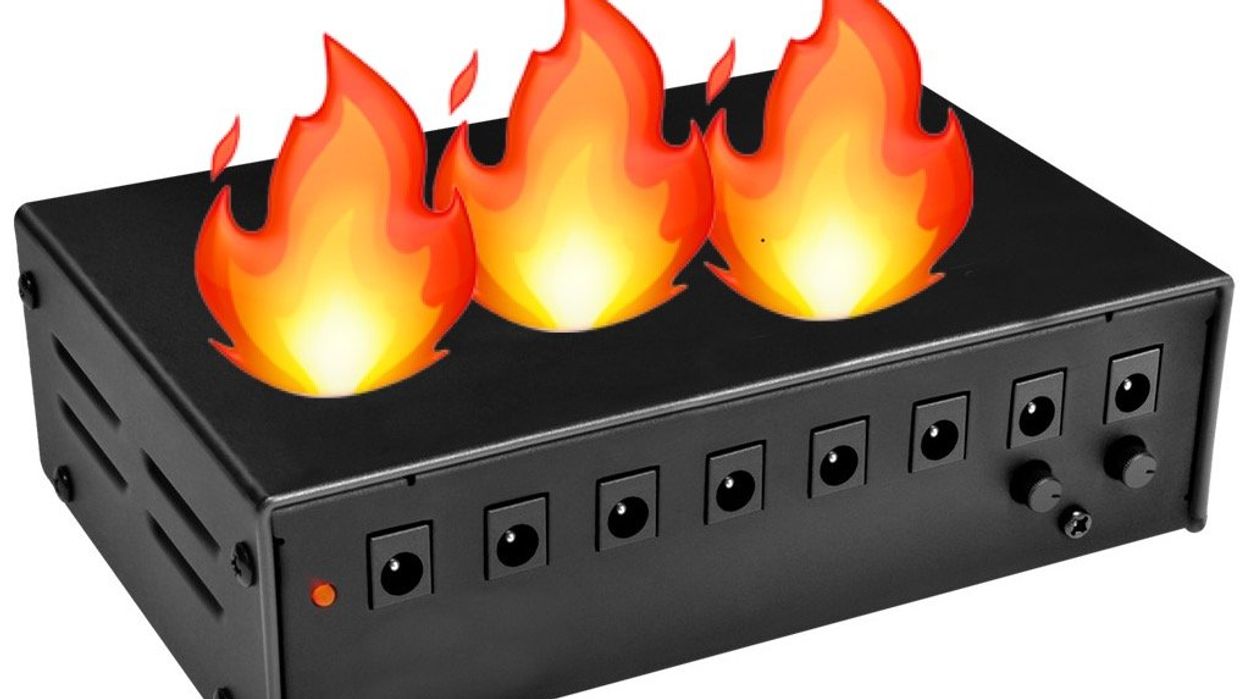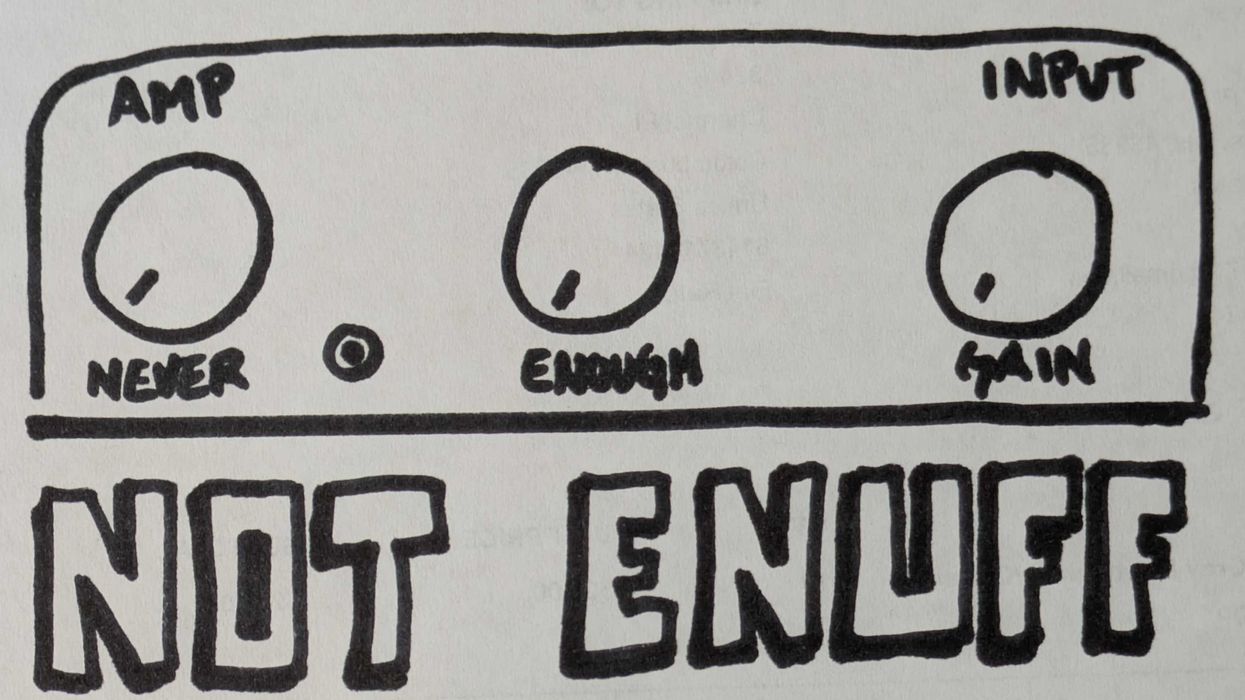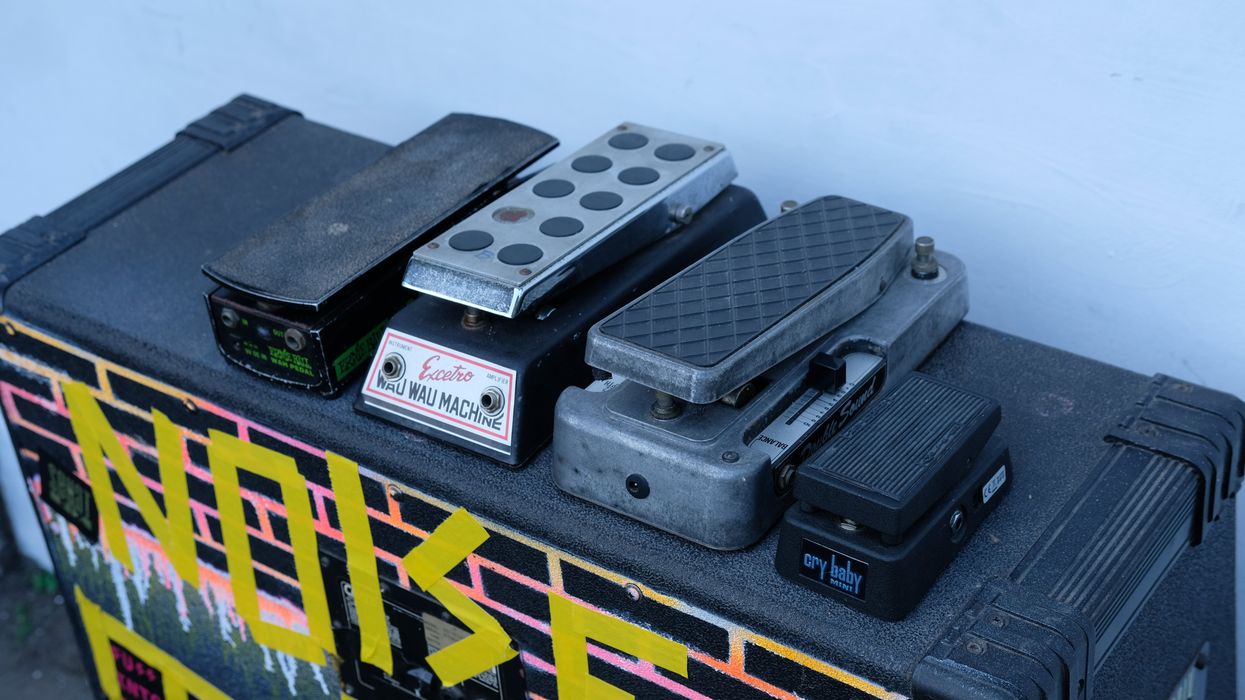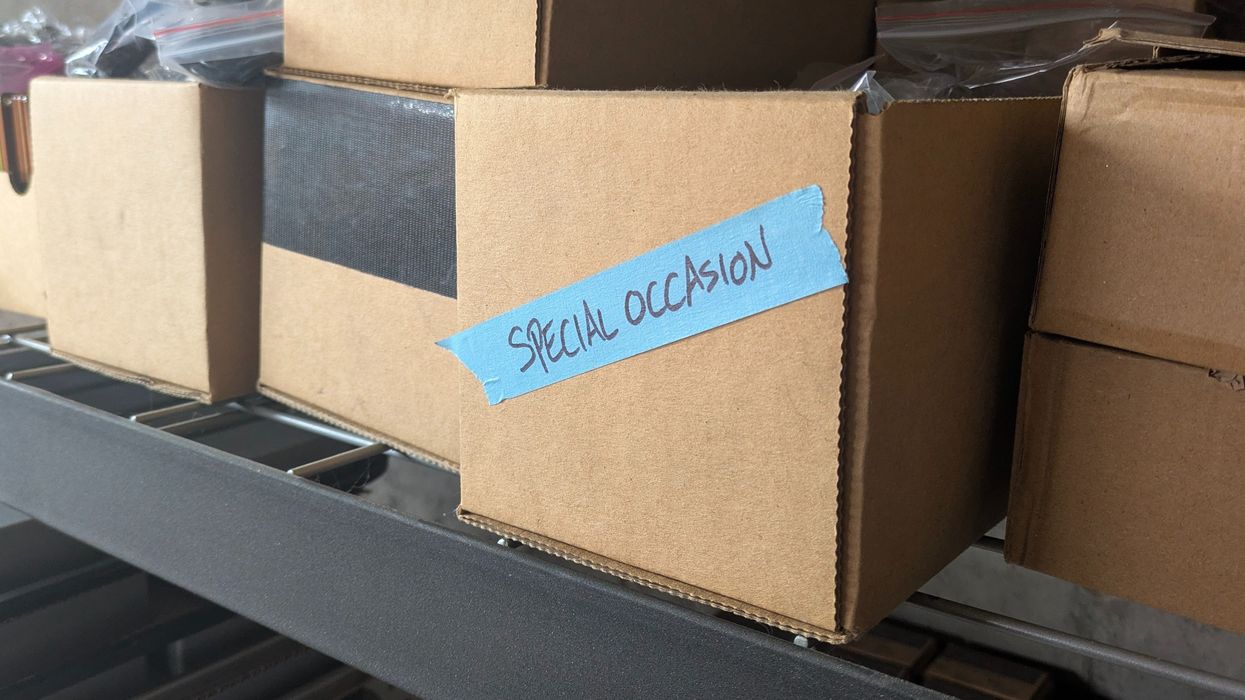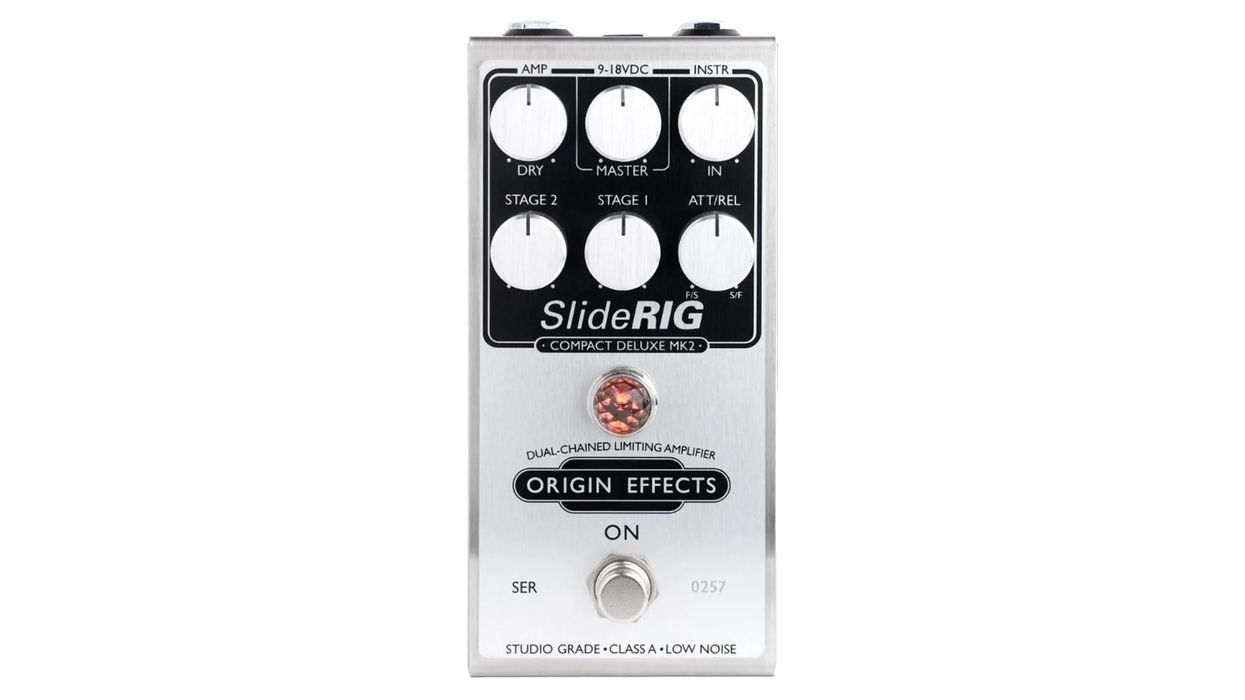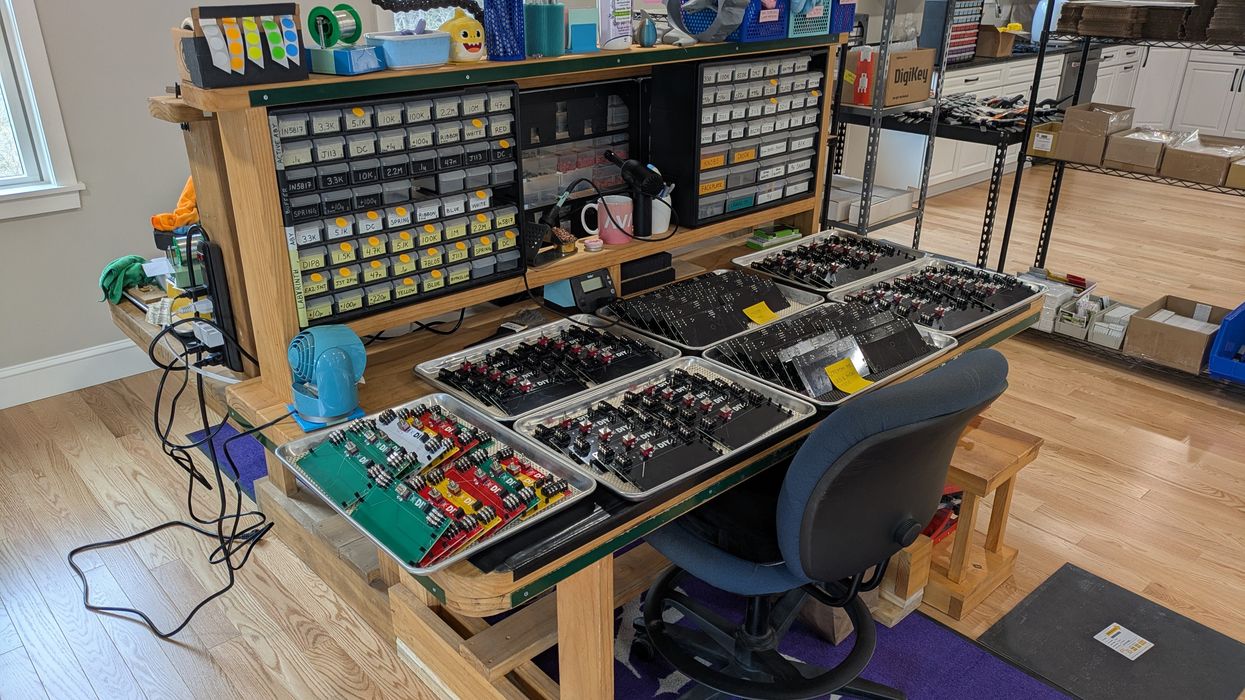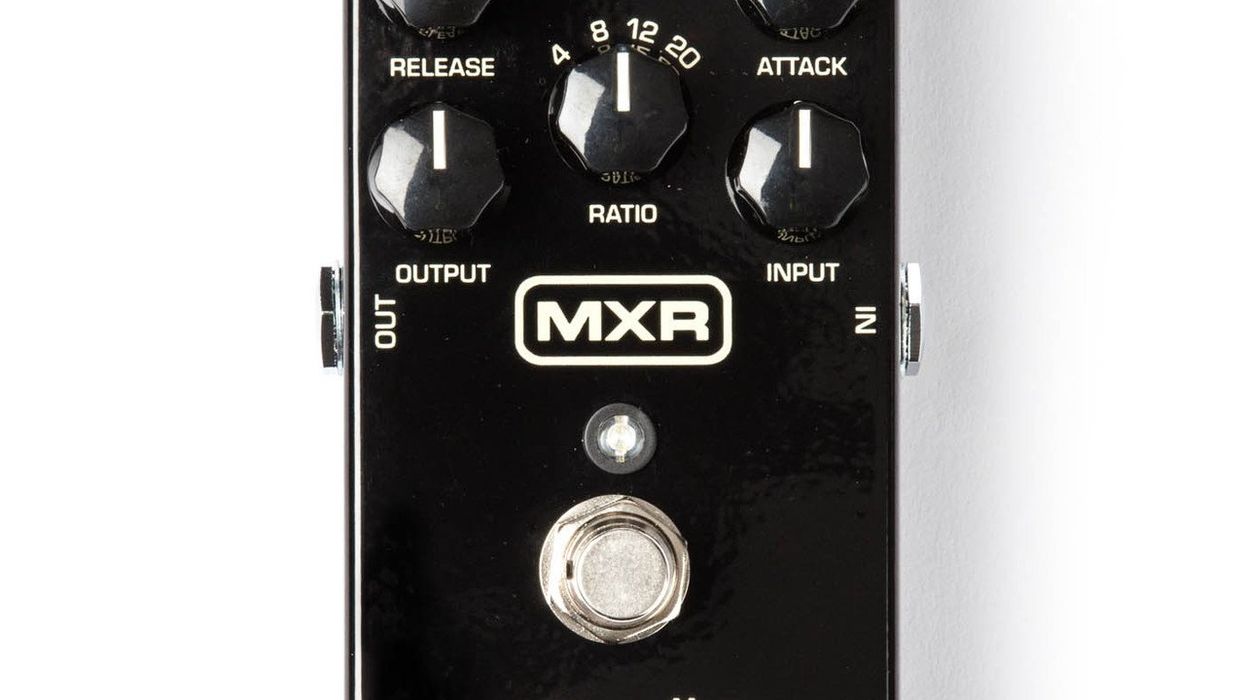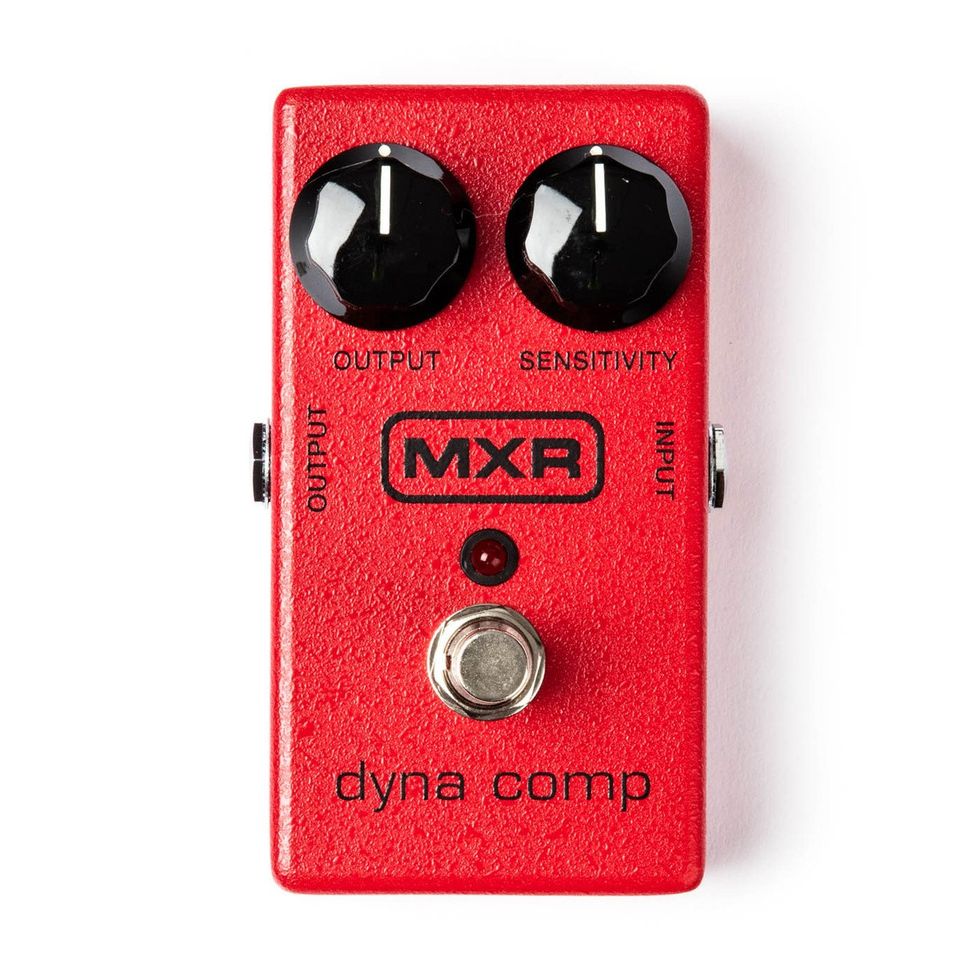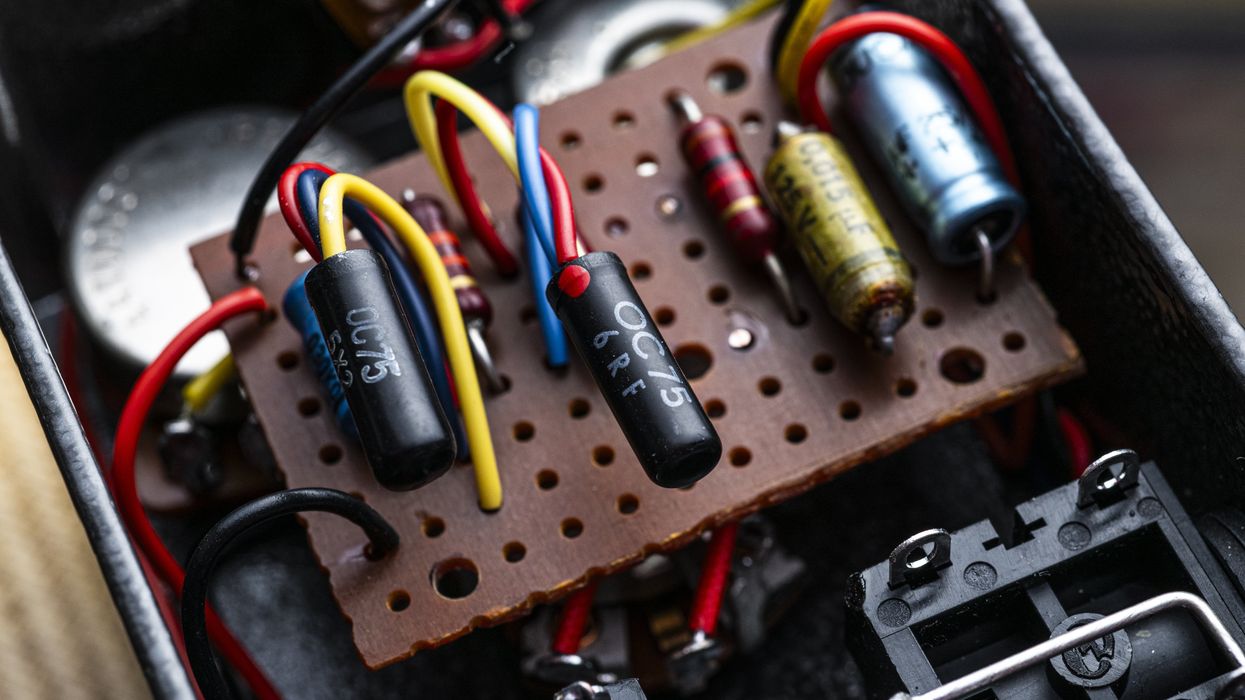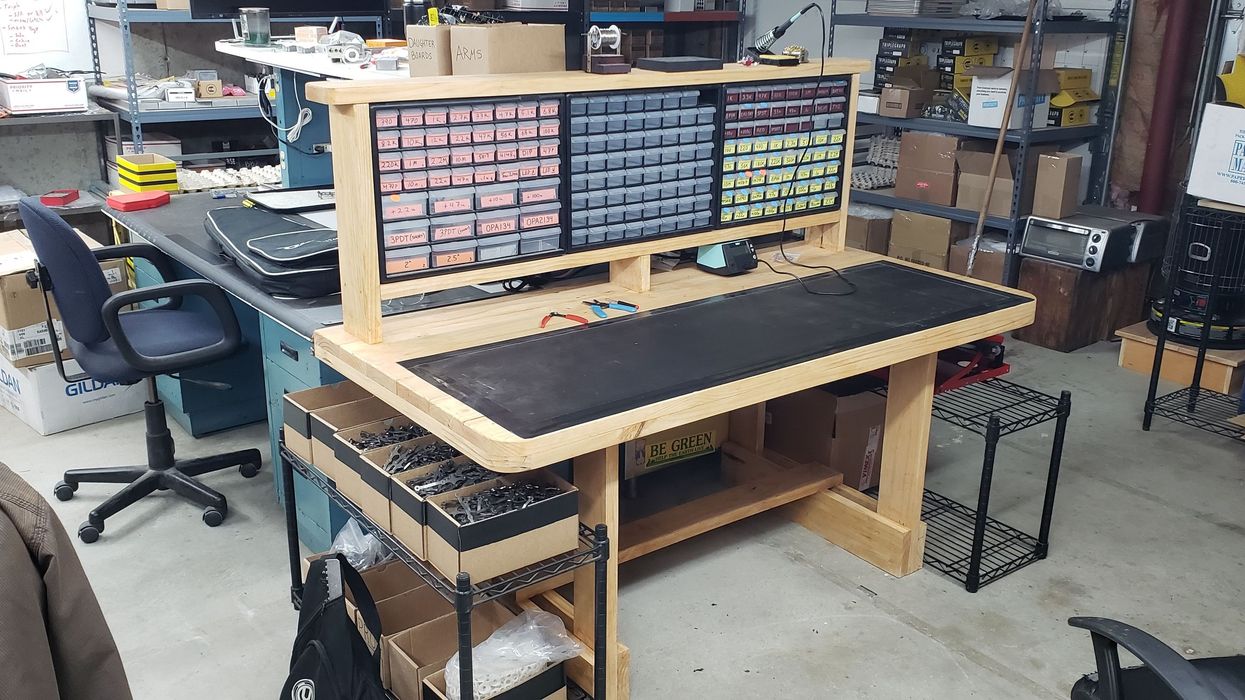Heat’s effects on electronics can range from the magic of thermionic emission in vacuum tubes to the horror of smoke pouring out of the polarity protection diode in your Klon Centaur.
For all the electronic arenas where heat can do some good, power supplies are one place where heat is persona non grata. Pedalboard power supplies convert the AC voltage from your outlet into something your pedals can actually use. This conversion process is not 100 percent efficient, and those inefficiencies are energy losses that become heat. For most power supplies, the amount of heat generated in the regulation process is directly proportional to the current consumed by the attached pedal. The more power hungry the pedal, the more load on the connected supply, and the more thermal energy that will need dissipating inside the supply. If heat levels are manageable, the power supplies can stay cool enough to operate for years. If heat builds faster than conduction (heat sinks) or convection (fans) can cool, the power supply may overheat, and long-term overheating can damage components and reduce the working life of the supply. The higher the temperatures, the more precipitous the failure, up to and including instant small-scale detonation.
In short, heat in your power supply is an insidious thing. If you’re pushing the maximum limits of your supply’s capabilities, you may not be making enough heat to instantly damage something, but you can be operating at a temperature that reduces its reliability and longevity significantly. A lot of DIY pedalboard builders will plug everything into a supply and assume that if everything appears to power up initially, the setup will be stable and reliable in the long-term. Unfortunately, that is not necessarily true. If you strain all the constituent ports of your isolated power supply just slightly, you may produce enough heat overall to slowly roast sensitive components. While these components may take months to accrue enough damage to cause a failure, overloading your supply will eventually result in an effect the player can see or hear.
The components generating the heat in most supplies are the regulators of linear power supplies and the switching elements in switched-mode supplies. Many of these devices and/or schemes are smart, and will shut down gracefully as ambient temperatures get too hot. The parts that surround these heat generators are not nearly as clever, and the regulator can heat up other parts of the supply to failure, even while operating normally itself.
“Don’t think that your setup is kosher just because the pedal powers up.”
Parts like electrolytic capacitors are particularly prone to damage when operated outside of their specified heat range. Electrolytics are typically rated for a lifetime in hours at a specific temperature. That lifetime is usually halved for every 10 °C increase in ambient temperature. So, if the total heat produced by your supply raises the temperature of the air inside its enclosure by 10 degrees over the capacitor’s rating, you’ll have cut the power supply life by half.
We’ve recently run a series of tests on the thermal performance of a host of pedalboard power supplies. The results were surprising. Of all the supplies we tested, every single one of them was shockingly warm when loaded to even 75 percent of their rated maximums. Many were too hot to touch and had chassis temperatures that measured in the 130 °F range, which is quite a bit more than what most electrolytic capacitors are rated for. To be fair, just because a supply runs hot does not mean it will be unreliable, and most pedalboards don’t come anywhere close to using even 75 percent of the supply’s available power. However, it is also safe to say that these devices will run longer at lower temperatures, and maybe by a substantial amount depending on the types of components they have inside.
My advice is this: Firstly, do not connect your power supply to a device that draws more mA than the connected port is rated for. Don’t think that your setup is kosher just because the pedal powers up. Secondly, plug in your ’board and let it come up to temperature. If you can’t touch the surface of the enclosure indefinitely, it is almost certainly too hot. You may want to add another supply to the ’board to distribute the heat load and maintain a more reasonable temperature. Continuously check your temperature as you make changes to your board, particularly if you are adding high-power devices.
Power supplies can be easily ignored. They do their jobs without complaining, sometimes even while they’re dying. Make sure to check in on them to keep them operating safely for the long-term.


